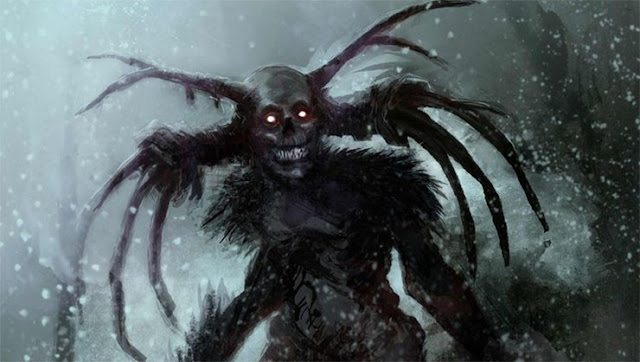Wendigo is a half-beast creature with supernatural hunting abilities appearing in the legends of the American Indians. The most frequent cause of transformation into a Wendigo is if a person had resorted to cannibalism.
The Wendigo Folklore:

The wendigo is a part of the popular folklore in a number of Algonquin-speaking peoples, including the Ojibwe, the Saulteaux, the Cree, the Naskapi, and the Innu people. Although descriptions can vary somewhat, common to all these cultures is the belief that the wendigo is a malevolent, cannibalistic, supernatural being. They were strongly associated with winter, the north, coldness, famine, and starvation.
Description Of A Wendigo:
People often describe Wendigos as giants that are many times larger than human beings, a characteristic absent from myths in other Algonquian cultures. Whenever a wendigo ate another person, it would grow in proportion to the meal it had just eaten, so it could never be full.
Therefore, wendigos are portrayed as simultaneously gluttonous and extremely thin due to starvation. Wendigos are said to be never satisfied after killing and consuming one person, they are constantly searching for new prey.
How Does A Wendigo Kill Its Prey?
Wendigo infects its victims slowly, tormenting them as it takes over the mind and body. It begins with strange odours that only the victim can smell. They’ll experience severe nightmares and an unbearable burning sensation throughout their legs and feet and usually end up stripping down, running naked through the forest like a madman, plunging to their death. The few who have returned from the woods after suffering Wendigo fever have been said to come back utterly insane.



